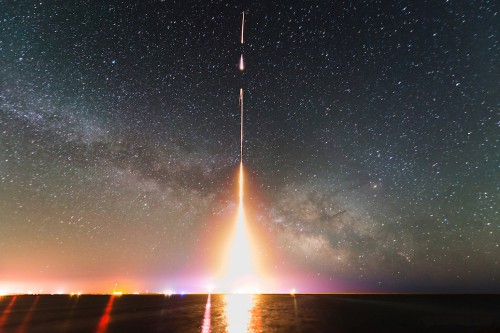
The universe is vast and, apart from the stars and galaxies, a seemingly very dark and empty place, with utter blackness stretching out for infinity. While that is basically still true, an experiment on a NASA sounding rocket has found that the spaces between galaxies are actually significantly brighter than first thought, which may significantly alter our understanding of the nature of the universe including galaxies themselves.
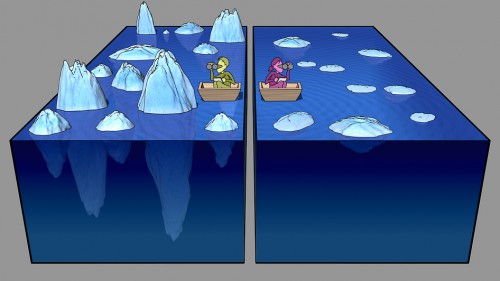
The Cosmic Infrared Background Experiment (CIBER) has measured the amount of infrared light in the space between galaxies and discovered that there is a surprising surplus, creating a diffuse cosmic glow as bright as all of the known galaxies combined. This glow is thought to be caused by orphaned stars which have been flung out of their galaxies, becoming rogue stars drifting alone in intergalactic space.
This background infrared light has been detected before, by the Spitzer Space Telescope, but there has been debate among astronomers as to whether the glow comes from such stars stripped away from their galaxies or from the first known galaxies to form in the early universe. The answer now appears to be the former.
“We think stars are being scattered out into space during galaxy collisions,” said Michael Zemcov, lead author of a new paper describing the results from the rocket project and an astronomer at the California Institute of Technology (Caltech) and NASA’s Jet Propulsion Laboratory (JPL) in Pasadena, Calif. “While we have previously observed cases where stars are flung from galaxies in a tidal stream, our new measurement implies this process is widespread.”
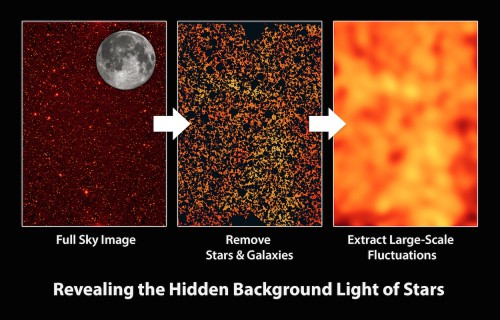
The discovery also affects astronomers’ understanding of galaxies themselves. They may not be quite the compact “islands” of stars that we are familiar with; instead they may actually extend out farther, past their more distinct boundaries to form a wider, more interconnected sea of stars.
CIBER was able to capture wide-field images of the cosmic infrared background at two different infrared wavelengths than those seen previously by Spitzer. The measurements need to be done in space because the Earth’s atmosphere also glows brightly at these wavelengths, making the observations much more difficult. CIBER used used suborbital sounding rockets to make its observations.
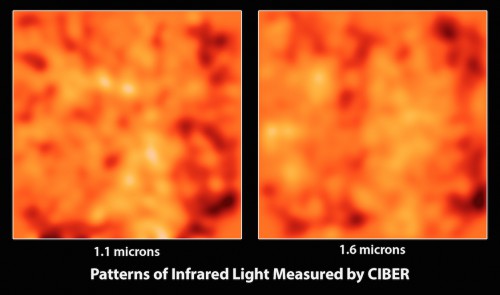
As Mike Garcia, a program scientist from NASA Headquarters, noted: “It is wonderfully exciting for such a small NASA rocket to make such a huge discovery. Sounding rockets are an important element in our balanced toolbox of missions from small to large.”
So how does the imaging process work? When cameras are launched into space for CIBER flights, they take pictures for about seven minutes and then return the images to Earth. Four such CIBER flights have been conducted so far, launching from the White Sands Missile Range in New Mexico. The new results come from two of those launches, in 2010 and 2012. To map out the background glow, scientists have to mask out the light coming from galaxies and bright stars, as well as our own Milky Way galaxy. The background infrared light then becomes visible as splotches, which are much larger than any individual galaxy. By measuring the brightness of fluctuations in these splotches, scientists can determine the overall amount of background infrared light.
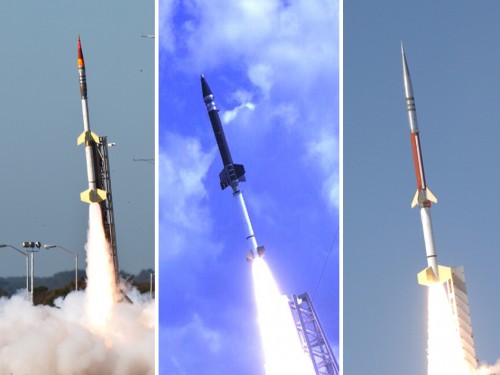
The results were surprising. There was much more infrared light in the background than had been anticipated. The excess light showed up as a blue spectrum, which meant the brightness increase was at shorter wavelengths. The explanation was that the light came from previously undetected stars floating freely between galaxies. If the light had been from early galaxies instead, it would have had a redder spectrum.
“The light looks too bright and too blue to be coming from the first generation of galaxies,” said James Bock, principal investigator of the CIBER project from Caltech and JPL. “The simplest explanation, which best explains the measurements, is that many stars have been ripped from their galactic birthplace, and that the stripped stars emit on average about as much light as the galaxies themselves.”
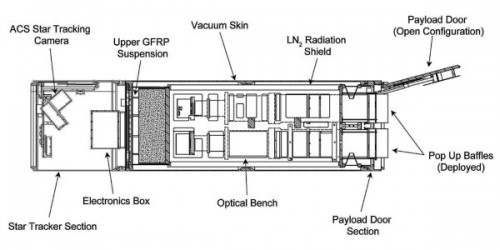
While it is now thought that these stray stars between galaxies are the source of the infrared glow, additional experiments will seek to confirm that. Any stars tossed out from their galaxies should then still be in the same regions that they are in now. Astronomers will also use other infrared colors to learn more about how these stars have been ejected from their galaxies during the Universe’s history.
More information about CIBER is available here, and more information about NASA’s sounding rockets can be found here.
The new findings will be published Friday, Nov. 7, in the journal Science.
CIBER is built by an international collaboration of Universities and Government Laboratories.
“Caltech manages JPL for NASA. The work was supported by NASA, with initial support provided by JPL’s Director’s Research and Development Fund. Japanese participation in CIBER was supported by the Japan Society for the Promotion of Science and the Ministry of Education, Culture, Sports, Science and Technology. Korean participation in CIBER was supported by the Korean Astronomy and Space Science Institute.”
Want to keep up-to-date with all things space? Be sure to “Like” AmericaSpace on Facebook and follow us on Twitter: @AmericaSpace



